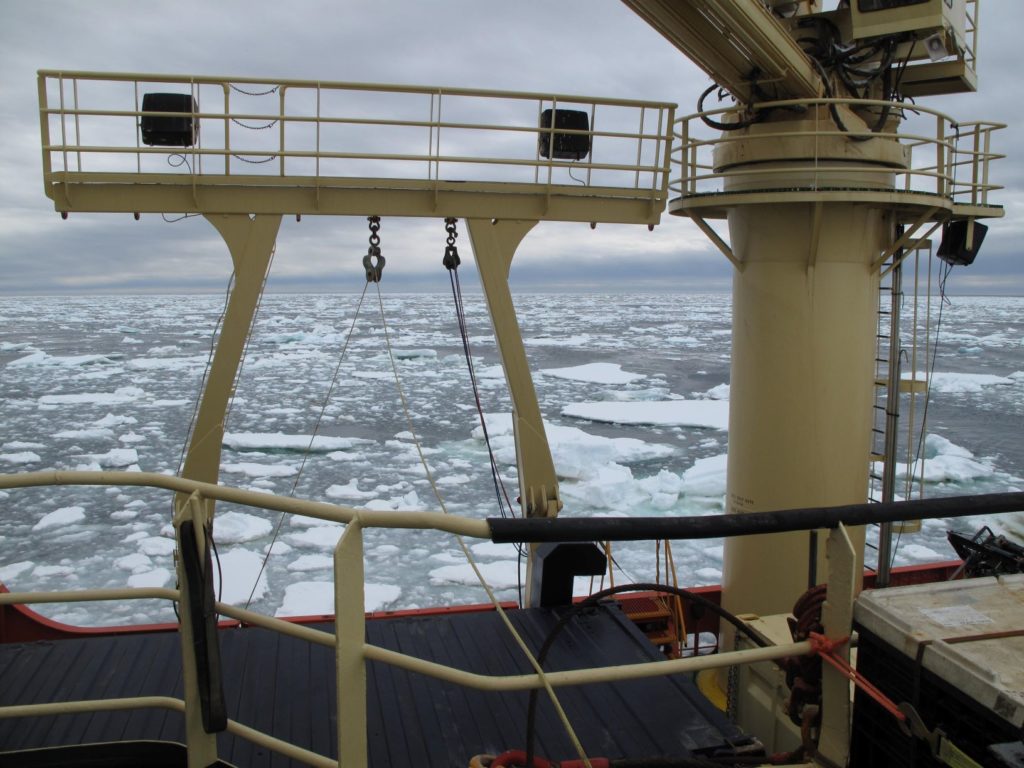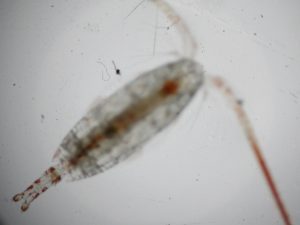In the ice

January 10 2019 (Note: this is #11 in a series of posts describing my NSF-sponsored fieldwork in Antarctica aboard the Laurence M. Gould).
Yesterday was another set of firsts for me, filled with moments where I was struck with, “Wow, I’m really in Antarctica.” We’ve moved steadily southward, zig-zagging toward and away from the coast as we complete our surveys. As we moved inshore along yesterday’s line, we first hit brash ice, a kind of watery, slushy mix and then pancake ice, flattish chunks of ice coating the surface with larger ice floes sprinkled into this mix. THIS is really Antarctica, right?! It was the first time I’ve ever seen waves moving across a field of ice. Everyone with a spare moment took a break to head on deck as we passed dozens of crabeater seals lounging on the ice floes. To a careful eye, the colors in the ice tell a story. I learned that a red streak across the ice isn’t necessarily evidence of a murderous rampage, but more likely a sign that a seal has taken a bathroom break (the “crabeater” seals actually eat a lot of bright red krill). Back home “yellow ice” would most likely indicate a popular spot for dog walking. Around here, the yellow and brown layers in the ice indicate the growth of ice algae, mostly diatoms, embedded in the ice. This creates a really interesting ecosystem, because the ice is fresher than ocean water, and as it melts, the salts come out first, creating very salty pockets called brine channels. The algae are adapted to grow in a wide range of salinities and they can benefit from receiving high levels of light near the surface of the water. All this ice algae is a welcome food resource for the zooplankton (including my favorites, the copepods).
 It was exciting and challenging to work in this environment. We had to be very careful in deploying and recovering instrument, as it could be dangerous if anything snagged on a chunk of ice. Operations required extra hands on deck and careful coordination with the people driving the ship and operating the winch. Everything went smoothly today. The samples were worth it! We got a big yield with all different kinds of critters….the biggest amphipod I’ve seen so far and a carnivorous comb jelly (Beroe) were among the stand-outs. The copepods didn’t disappoint either…I got a mix of Calanoides acutus and Calanus propinquus (my two “top targets”) and both species were really brightly pigmented, with parts of their bodies bright red or orange from the carotenoids they obtained from their diet. Check out the bright red antennae, the spots along the urosome (the “tail”) and the colorful gut running along the main part of the body.
It was exciting and challenging to work in this environment. We had to be very careful in deploying and recovering instrument, as it could be dangerous if anything snagged on a chunk of ice. Operations required extra hands on deck and careful coordination with the people driving the ship and operating the winch. Everything went smoothly today. The samples were worth it! We got a big yield with all different kinds of critters….the biggest amphipod I’ve seen so far and a carnivorous comb jelly (Beroe) were among the stand-outs. The copepods didn’t disappoint either…I got a mix of Calanoides acutus and Calanus propinquus (my two “top targets”) and both species were really brightly pigmented, with parts of their bodies bright red or orange from the carotenoids they obtained from their diet. Check out the bright red antennae, the spots along the urosome (the “tail”) and the colorful gut running along the main part of the body.